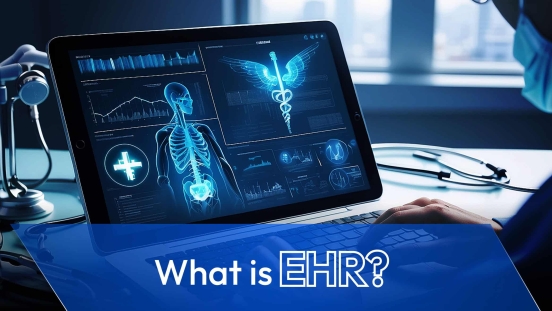In an era where healthcare depends on seamless data access and accurate digital records, Electronic Health Records (EHRs) have become the foundation of clinical practice. But not every provider has the same needs. While large hospital systems demand deep customization, small practices often prioritize affordability and simplicity. As 2025 unfolds, the EHR landscape continues to diversify, providing solutions tailored to organizations of every size and specialty.

The Shift Toward Cloud-Based Systems
For smaller medical offices, cloud EHR platforms represent a technological breakthrough. These systems replace legacy software with flexible, web-hosted tools that allow real-time updates and secure access from any device.
Advantages include:
Low Capital Expense: No on-site servers or costly infrastructure.
Faster Deployment: Implementation can occur in weeks, not months.
Automatic Compliance: Updates for HIPAA, GDPR, and other regulations occur seamlessly.
Cross-Practice Data Sharing: Enables cooperation between generalists, specialists, and labs.
Systems like Kareo Clinical and AdvancedMD exemplify this transformation — delivering billing, telehealth, and charting functions through one cohesive interface.
Core Functionalities Defining Next-Gen EHRs
Modern EHRs are not just digital filing systems; they act as decision-support platforms that drive better clinical and operational outcomes. Popular features include:
Integrated Financial Tools: Reducing manual entry and boosting claim accuracy.
AI-Assisted Documentation: Automatically transcribes and codes physician notes.
Telemedicine Support: Facilitating hybrid care and post-visit continuity.
Behavioral Health Templates: Preloaded assessments for mental health professionals.
Patient Self-Service Portals: Encouraging engagement, transparency, and satisfaction.
These tools collectively reduce administrative overhead and elevate care delivery standards.
EHR Comparisons Across Provider Sizes
Platform | Key Differentiator | Best Suited For | Pricing Type |
Kareo Clinical | Simple, integrated billing, telehealth | Solo and small practices | Monthly subscription |
Athenahealth | Advanced analytics, network connectivity | Mid-sized providers | Subscription |
Oracle Health | Scalable enterprise solutions | Large hospital systems | Enterprise license |
OpenEMR | Open-source, community-driven | Clinics with IT resources | Free / Support optional |
This segmentation shows how the EHR ecosystem supports everyone—from grassroots clinics to multinational health systems.
Evaluating ROI and Total Ownership Cost
When calculating value, leaders must assess not only the subscription but also implementation, training, customization, and maintenance costs.
High-End Systems: Offer deep integration with AI, but their complexity can slow adoption.
Cloud-Based Systems: Provide an agile balance between cost and capability.
Open-Source Platforms: Ideal for nonprofits and global health projects where budgets are tight.
The optimal choice depends on operational priorities, patient volume, and the organization’s IT maturity.
Best Practices for Implementation
To ensure successful adoption, organizations should focus on the human side of technology.
- User-Centered Planning: Engage clinicians early in selection and design.
- Workflow Mapping: Identify how digital tools fit into existing routines.
- Interoperability: Select systems that integrate with laboratories, imaging, and pharmacy networks.
- Pilot Testing: Launch in a limited environment before full deployment.
- Performance Monitoring: Use metrics such as documentation time, claim success rate, and patient satisfaction.
Gradual, feedback-driven rollouts consistently deliver better outcomes and higher user satisfaction.
The Evolving Role of AI and Automation
By the late 2020s, EHRs will increasingly rely on machine learning and natural language processing to deliver predictive alerts, summarize encounters, and assist clinical decision-making. Automation will minimize manual documentation, enabling clinicians to spend more time with patients.
Final Insights
EHR systems have transitioned from simple digital charts to integrated intelligence networks. Whether it’s a small primary care practice embracing cloud agility or a major hospital optimizing enterprise workflows, the right EHR can redefine efficiency and patient experience. Providers that invest in user-friendly, interoperable systems today will not only enhance their operations but also future-proof their practices for a rapidly digitizing healthcare world.
